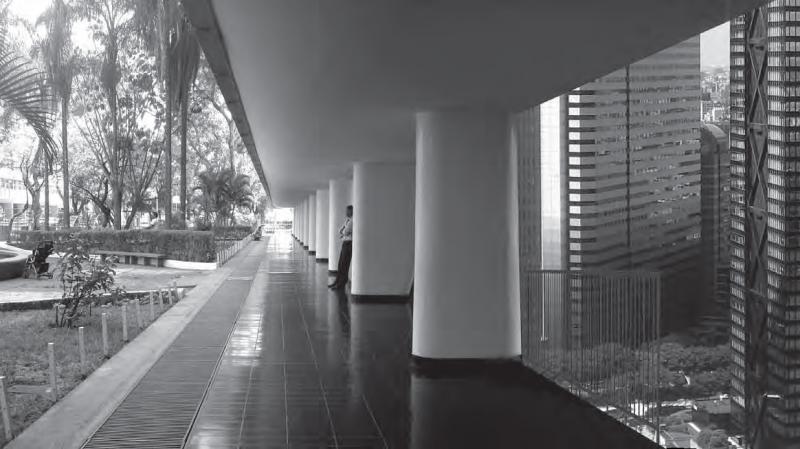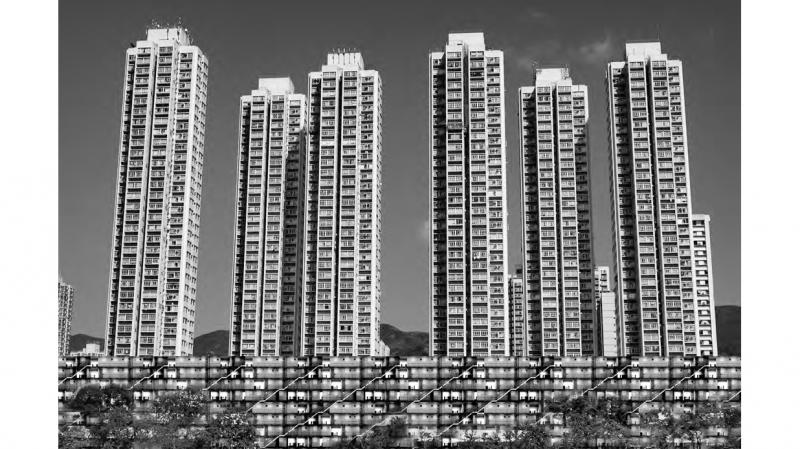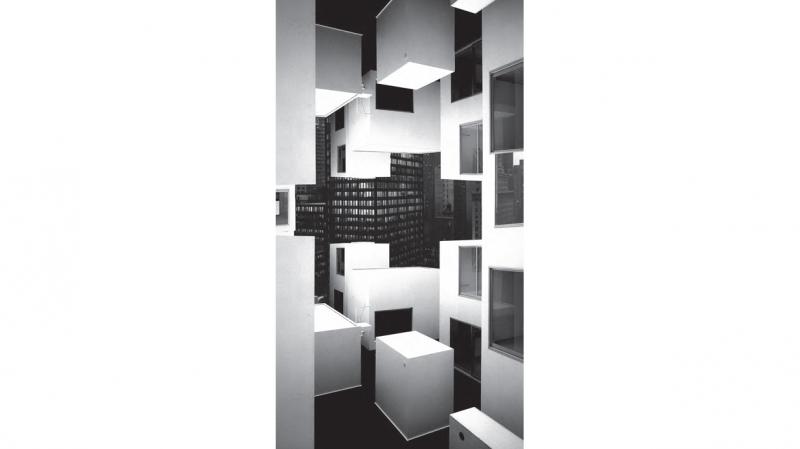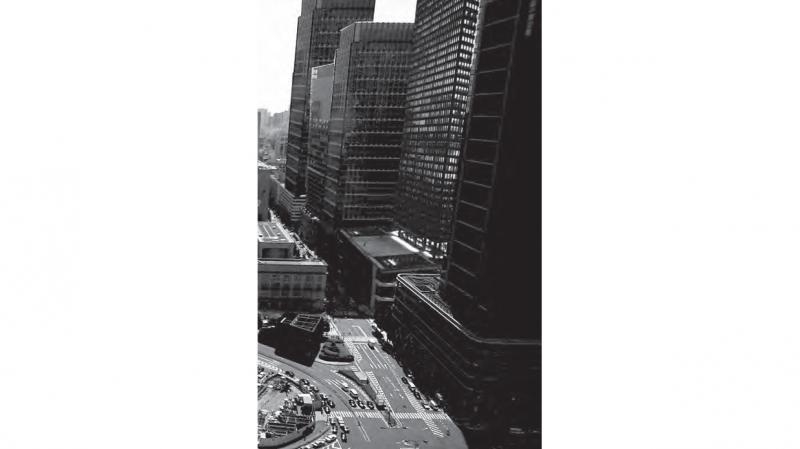



Tokyo Podium as an interface to the City
The dominant type of contemporary Tokyo’s high-density districts is the tower-and-podium typology. Situated around infrastructural nodes, this type has a podium that is historically defined by a height restriction of 31 metres (8 storeys), which was higher than the rebuild traditional city. The height of the podium in Tokyo equals the height of a tower in many countries.
This tower-and-podium model however lacks typological and programmatic richness, as it is standardised in design and rationalises activities into strict functional zones. Each plot is therefore isolated and interiorised. This imported Western model, erased the typical Japanese public space composed by interspaces: streets, alleyways and voids in which all public activity took place.
Kenzo Tange in his Plan for Tokyo 1960 already recognised the need for a new Japanese building type that would respond to densification and proposed the megastructure. However his city in the sky avoided the problem of the ground and podium and was raised above it by a pilotis-and-core system. Essentially an empty void, this negative space was intended to mediate between the public realm of infrastructure and the private realm of architecture. In his critique of Tange’s rigid structural system that concentrates functions, Fumihiko Maki juxtaposed the megastructure to his preferred model of large compositional form, the ‘group form’. Concentrating on a low-rise scale that was similar to the traditional city that was increasingly replaced by the podium of towers, he reintroduced the Japanese concept of public space as interspace.
What Tange and Maki had in common is the search for a specific Japanese type that would not succumb to the simple tower-and-podium model. Their historical conversation raises an interesting question and problem: How can the contemporary dominant type of tower-and-podium become specific to a Japanese kind of public space as interspace? How do we challenge and redefine the horizontal and vertical interspaces that would be required and permit a different kind of densification that retains the idea of traditional Japanese spatial qualities?